The Sands Of El Alamein: Gearing Up For The FoW Boot Camp [Part One]
February 13, 2017 by crew
Ever since Beasts of War announced the boot camp they’ll be hosting for Flames of War 4th Edition, a discussion has been picking up across the site about the North African theatre of World War II. Small wonder, since the models we’ll be using at the event will be featured in the “Rommel’s Afrika Korps” and “Monty’s Desert Rats” Starter Kits.
That said, the Desert War was one of the longest and far-ranging campaigns of World War II. So what slice of the Desert War will we be dealing with at the boot camp? As part of the ramp-up for the event, I’ve been asked to present some context on the specific setting and timeframes for the battles we’ll have on our tables.
The Battles for El Alamein
July-November, 1942
Put most generally, the games we’ll be playing at the Flames of War 4th Edition boot camp will be set during the Battles of El Alamein, which ran from July to November 1942. This is the time period when most of the equipment that players will have in their starter sets was widely available to the historical armies in question.
This also makes sense since Battlefront is rolling out an “El Alamein Battle Box” as part of their 4th Edition release. Furthermore, El Alamein is by far the most famous part of the Desert War, when everyone’s favourite vehicles and equipment were in use. In short, it’s a great starting point for a new release.
Now this series won’t feature any table top games since our games won’t take place until the boot camp. Instead, we hope to provide a primer on El Alamein, sketching out the battle’s general outline, profiling its commanders, comparing weapons and equipment, and highlighting some key features encountered by the men on the ground.
In so doing, we’re aiming to provide some background to the boot camp experience. How do the tactics, pieces, and strategies on our tables measure up against those on the actual battlefield? What did these battles mean in the larger picture? Most importantly of all, we hope to crank up the excitement as the boot camp event draws near!
The Desert War
General Background
In 2015 we ran a five-part article series on the Desert War in its entirety, so I won’t belabour the reader with another long chronicle of every battle and campaign. For those that are interested, the original series is linked below. But for our El Alamein discussion, we’ll summarise the Desert War so far in the broadest of strokes.
- Part One - Overview & Origins
- Part Two - Early Successes
- Part Three - Pushing The Envelope
- Part Four - Turning The Tide
- Part Five - Endgame
The Desert War started over two years before El Alamein, in the summer of 1940. France was in mid-collapse, and Great Britain looked as if it might fall as well. Italian dictator Benito Mussolini believed the war was about to end in an Axis sweep and wanted to make sure his country got a share of the spoils.
One easy target for Mussolini seemed to be the British, with holdings and garrisons in East Africa and Egypt. After taking the British portion of what is today Somalia and attacking the Sudan, the Italians next targeted Egypt. In September 1940, their 10th Army (200,000+ men) invaded Egypt from the Italian colony of Libya.
However, the British garrison in Egypt (the WDF, or Western Desert Force) was not about to let Egypt fall. Despite numbering just 30,000, they launched a counterattack in December 1940 that not only threw the Italians out of Egypt, but took half of Libya as well. By the spring of 1941, it looked as if the Italians might lose it all in North Africa.
Feeling compelled to help his faltering Italian ally, Hitler sent a general and a handful of incomplete divisions to bolster the Italian defence. The general, of course, was Erwin Rommel, and the few thousand men (just a few reinforced regimental battlegroups at first) was the beginning of the Afrika Korps.
Before the Afrika Korps was even full landed at the port of Tripoli, Rommel struck (despite orders to remain on the defensive). He quickly expelled the British out of Libya and drove them back into Egypt. The Allied-held port of Tobruk was cut off and subjected to a siege that would last nearly a year. The legend of the “Desert Fox” was born.
A succession of British commanders tried to deal with the Rommel, hoping to throw him back into Libya and relieve the besieged defenders of Tobruk. General Wavell tried and failed with Operation Battleaxe in the summer of 1941, while his successor Claude Auchinleck had better luck (temporarily) with Operation “Crusader” in the fall.
Rommel, however, recovered quickly from this setback. In early 1942 he launched his most audacious and successful desert offensive yet, the Gazala Offensive. Yet again he and his Italian allies plunged into Egypt, and while Tobruk had held out for nine months last time, this time it fell in a matter of hours.
This time the British were thrown back deep into Egypt. They tried to mount a stand at Mersa Metruh, and quickly crumbled. Falling back further, they set up a new position near a remote railroad town called El Alamein. This was just sixty-five miles west of Alexandria…with Cairo, the Nile, and the Suez Canal just behind.
But while El Alamein may have been the last defensive position before the “prizes of Egypt,” at least it was a solid place to make a stand. The coastline bends down from the north, and from the south yawns the Qattara Depression, 650 feet deep in places, a vast impassable salt marsh where no mechanised army can travel.
In short, El Alamein was a bottleneck. In place of the typical open desert, the British had a rocky corridor only about forty miles wide, hemmed from the north by the Mediterranean Coast and from the south by the Qattara Depression. At last, the British had a position Rommel could not outflank.
El Alamein – Facing Off
Setting The Stage
Units began to gather at El Alamein, facing off as reinforcements steadily stacked up. Both sides realised they faced incredible opportunities and immense obstacles. Many times in history, the importance of a given time or place isn’t apparent until years later. But here, both sides knew that one way or another, the war was about to change.
On the Axis side, Rommel never stood so close to absolute victory in North Africa as where he stood right now. One more smashing victory and Alexandria would be his, with Cairo, the Nile, and possibly the Suez Canal right after that. His men were tough, confident, and eager, while the British seemed to regard him almost as invincible.
However, Rommel’s forces were also deep in enemy territory. Bringing up supplies or reinforcements from ports like Benghazi and Tripoli, thousands of miles away, was a nightmare. The panzers were breaking down, the men were exhausted and sick with tropical diseases. Rommel’s “Panzerarmee Afrika” was a shadow of its former self.
As for the British, their army seemed in danger of falling apart. Six commanders had come and gone after a string of disastrous defeats, and the men had lost all confidence that any commander could actually beat “the Desert Fox.” And their backs were to the wall, one more retreat and Rommel would be in Alexandria.
However, the Allies also had massive advantages. Auchinleck had picked a masterful place to fight. Time and again Rommel had beaten the Allies by turning the “desert flank,” but here there was no desert flank because of the Qattara Depression. Rommel would have to make a frontal attack.
The Allies had also hurled themselves into immense preparations. They laid millions of mines, built fortified “brigade boxes” everywhere. They absorbed thousands of reinforcements. New American tanks would be arriving like the Grant and the Sherman. Supplies were plentiful, and they were steadily winning control of the sky.
Rommel’s only real chance was to hit and crack the “Alamein Line” before it had a chance to fully settle in place. On July 1st, 1942, he tried exactly that with a shove against the southern end of the Allied line. But his assault (started three hours late) almost instantly degenerated into an absolute disaster.
South Africans slammed the German 90th Light Division to a halt, who could only disengage under cover of a sandstorm. When the storm lifted they were hit on three sides by the British 1st Armoured Division. Only when Rommel himself showed up was 90th Light prevented from falling into a complete rout.
But soon Rommel himself was pinned down, it took a Stuka air strike to break him loose. Meanwhile, the 15th and 21st Panzer Divisions ran into the 18th Indian Brigade. Badly outnumbered, the brave Indians were overrun, but in the process positively mauled Rommel’s only two real tank units, and wrecked most of their irreplaceable panzers.
Rommel tried again on July 2nd, then shifted his assault to the northern coastal road on July 3rd. All were failures. Clearly, Claude Auchinleck was ready for the Desert Fox this time. After that, Rommel had no choice but to settle into the defensive and await reinforcements. But with his supply bases a thousand miles behind him ...
Of course, we’re just getting started. In next week’s continuation, we’ll start looking at some of the further battles around El Alamein, where the famous Bernard Montgomery finally arrives on the scene. We’ll also start comparing arms and armour and look at how some of the rules of the game reflect the conditions of this desert battlefield.
We hope you like our look at El Alamein so far. More importantly, we hope you’re getting fired up for the upcoming boot camp, whether you’re attending in person or plan to participate via Beasts of War’s live blog coverage! Either way, drop your comments below and keep the conversation going!
If you would like to write an article for Beasts of War then please contact me at [email protected] for more information!
"...we’re aiming to provide some background to the boot camp experience. How do the tactics, pieces, and strategies on our tables measure up against those on the actual battlefield?"
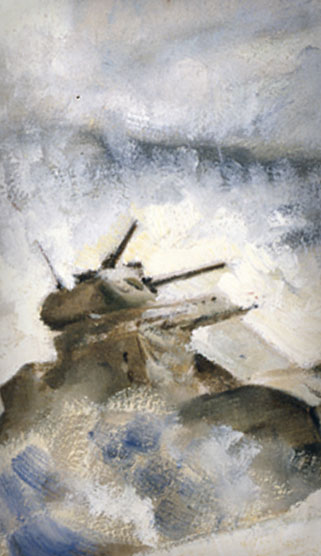
"...we’ll start looking at some of the further battles around El Alamein, where the famous Bernard Montgomery finally arrives on the scene"
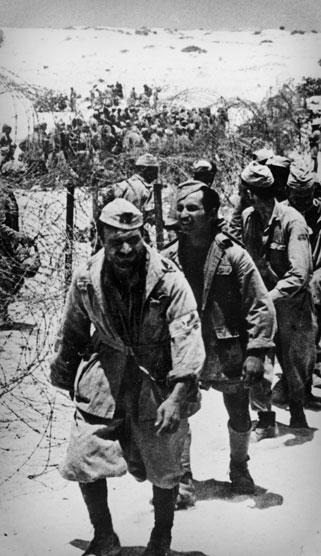






































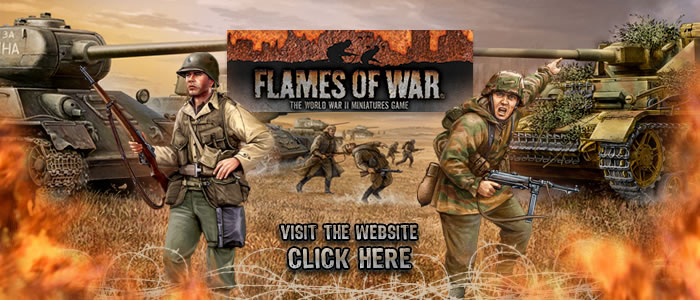

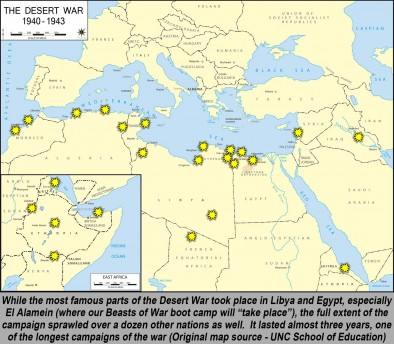

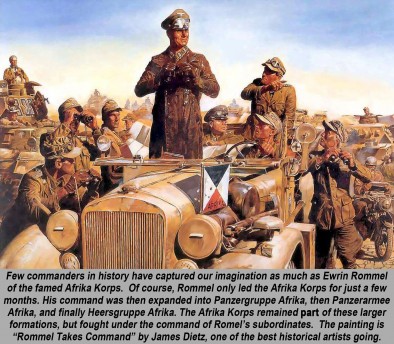
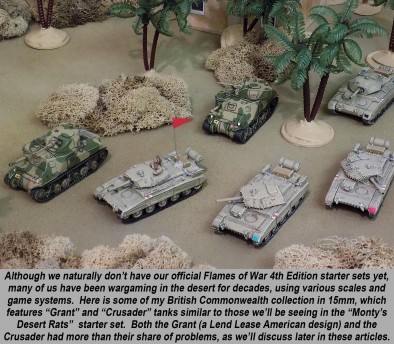
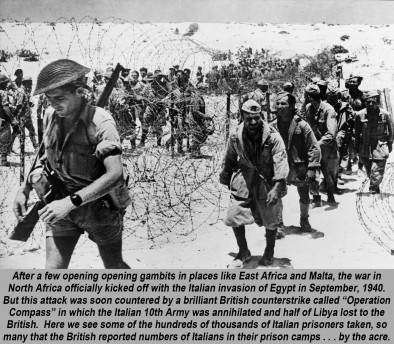
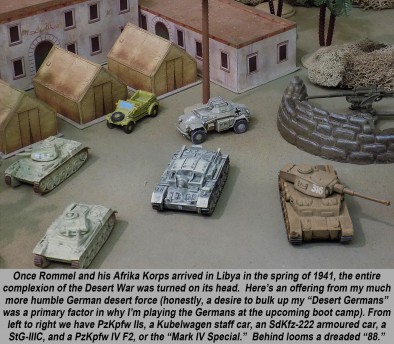
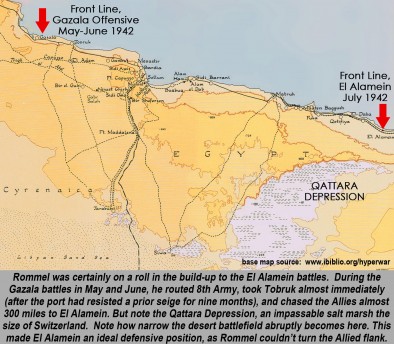
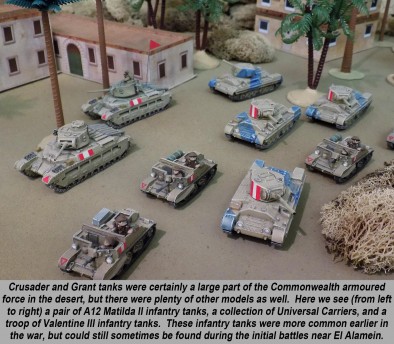
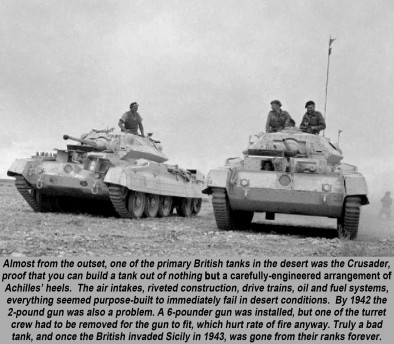
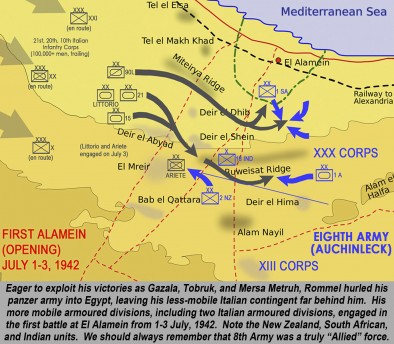






























Back in the burning sands of Africa, @oriskany
I know, right? It’s like an old mobster movie. “Just when I thought I was out, they pull me back in!” 🙂 But where the previous “Desert War” series covered the whole theater, this one will focus more on the specific El Alamein battles we’ll have on the table at the upcoming Boot Camp.
Thanks for kicking off the comment thread! 🙂
Watched a documentary about this last night during a bout of insomnia lol It seems to have been quite a turning point in the war at least from a moral perspective if anything. Also interesting that Churchill looks like he was about to ‘fire’ Montgomery for dithering, I saw the same thing between Napoleon and His Admiral of the Fleet just before Trafalgar – ended well for Montgomery, not so much for the other guy, but interesting none the less how those at the very top ‘just want thing to happen their way, regardless of the conditions faced by those… Read more »
Next bout of insomnia – try the Dutch “Admiral” on Netflix it will give you some sea battles with wooden ships.
El Alamein proved that Rommel could be stopped, and that Churchill was a bit too trigger happy when firing commander (does the owner of a London based football club spring to mind?)
Thanks @warzan and @rasmus – The question of Churchill’s potential impact on El Alamein (and firing of “dithering” Generals) has two sides, sort of an anti-Churchill perspective and a pro-Churchill perspective. The anti-perspective is pretty well known. Churchill constantly demanded aggressive action, even when the Allies in North Africa were not ready for it. Even when they were doing well, Churchill would demand that forces be sent in other locations, thus stalling the success of the North African forces. This happened when the first British commander (O’Connor, commanding what was then the WDF – Western Desert Force) was running over… Read more »
I remember my Uncle, a gunner through North Africe and then Italy, telling me his stories and showing his B&W photos – specially about the main barrage!
Let’s just say that when I get my British starter set one of the men will get an extra careful paint job! Play late war Germans normally, but Mid-War – gotta be the 8th!
Thanks, @coxjul . 😀 By main barrage, I presume we’re talking about the initial barrage at 21:40 hours, 23 October 1942? In other words, THE big barrage that started Monty’s assault at El Alamein? 😀 We discuss it (albeit briefly) in Part 3. I’ve read somewhere were someone was calling it “the biggest artillery barrage since 1918,” which seems a little tough to swallow given what was happening in Russia at the time. Maybe the biggest artillery bombardment by the UK / Commonwealth since 1918? My sources say almost 1000 guns of varying caliber (not including mortars) which . .… Read more »
A good read, my grand father fought at El Alamein so naturally I went with the Brits for the boot camp.
Or there were only British Tickets left…lol
I will fully admit I picked the Germans only because I have big pile of desert British, and very few desert Germans. 🙂
@davebpg – do you have any idea which division your grandfather was with? Even a shoulder patch would help us identify it, and we could see exactly where your grandfather was and what his unit was doing during this battle. 😀
Sadly not, its a bit of a tragic story but I’ll you in person in a couple of weeks 🙂
No worries, @davebgp – by no means do I mean to pry. It’s just something I’ve done for some people on the site, “found” veteran relatives (or at least their units, sometimes down to battalion level) and talked about some of what the unit did. Some folks find this interesting since veterans themselves tend to talk very little about what they and their unit were doing. 😐
Very practical. Of course I’m sure it had nothing to do with the fact that you love German equipment?
Actually for this battle I like the British tanks, because at this one point in the campaign 75% of British RTRs are actually American machines (Stuarts, Grants, Shermans). 😀 I think the starter kits for the British will be 6 American Grants and only 3 British Crusaders?
To be honest, though, I’m starting to fall in love with the PzKpfw IIIGs. They’re so small and cute in 15mm. 😀 😀 😀
Well that helped too lol
😀
A nice start to my week after a weekend of tank battles with your good self buddy. I am looking forward to the Boot Camp and will diligently read your pieces to have a better understanding of the wider picture. I was at Duxford Museum recently and got to look at the caravan vehicle that was once Rommel’s and Montgomery’s. It changed hands a couple of times as it was captured.
You might be talking about “Mammoth” – Rommel’s nickname for the plus-sized British truck he often used as his mobile headquarters. The truck was big enough where the back could be outfitted as quite the command post. 😀 I think this truck was later re-captured after El Alamein, and Monty MAY have used it for a while just as a publicity stunt. “Here I am sitting in his headquarters! Ha ha!” I’ll have to check the facts on that one.
Sounds right, it was a couple of trucks. One kitted out as a sleeping area with sink and some small comforts, the other was a command vehicle with map room.amd radio posts.
Apparently Rommel gave it to an Italian commander if memory serves and was later captured by Rommel.
Captured by Monty not Rommel…
Poor Italians. Always getting the hand-me-downs. 🙁
Great article, looking forward to reading more….
Also interested as to how the preparations for the Boot Camp are going :oP
I’m gathering information and materials for some interviews, but that’s a really small part of the overall boot camp. As far as tables / studio prep, we’ll have to keep a lookout for the weekly VLOGs, I suppose. 😀
Monty allowed the odds to stack ever greater in his favour, with a particularly massive disparity in the resources available to either side. Rommel was constantly short of fuel and ammunition, had a chronic lack of tanks (there’s irony) and was under pressure from Berlin that pulled in more than one direction (Hitler and Co micromanaging again.) Just as an example, Monty had more tanks parked in the reserves than were available on the battlefield from both sides combined. Germany had not wanted a North African adventure, not without seizing control of the Mediterranean Sea first but without taking Malta… Read more »
Great post, @dorthonion ! 😀 Monty definitely had no shame when it came to amassing a crushing materiel superiority – and with good reason. Auchinleck had already stopped Rommel at the First Battle of Alamein, and the Royal Navy and Air Force was starving him out of supplies from Malta and by bombing the roads from Tripoli and Benghazi. Also, Auchinleck had picked the perfect place to make a stand and made sure the Allies couldn’t be flanked from the south (Rommel’s one big move, sadly predictable by this point in the war). The problem was (as we’ll see in… Read more »
Fabulous stuff again by Professor @oriskany !!!
This week I will have to spent with my BA Soviets but from next week onwards it’ll be all Western Desert and Panzerarmee Afrika! Can’t wait to really get stuck into all this 😎
I know the feeling. Now that I have my airbrushes finally sorted and some other hobby projects out of the way, my DAK force is finally starting to show some progress. 😀
Professor Oriskany…PERFECT!
Ooof, I dunno about all that. Although when I was 16-17 I did teach the WW2 segment in our Advanced Placement European History class, which (being an AP course) is actually worth college credits.
So . . . technically . . . yeah, I have taught college-level WW2 history??
Nah, I’m not buying that either. 😀 😀
But that was 25 years ago. I’ve learned / published a little more since then.
A good lead-in style article for the battle @oriskany. Both Hitler and Churchill did not get what they were expecting in their man. For Hitler he was after a German Lawrence of Arabia and Churchill was after a brawler. Personally with Monty he appears as a modern day Cromwell in that the court never retires and each new generation must put him on trial. Some generations finding him guilty and others finding him not guilty. Both had to rebuild the army with the kingdom at stake, with one fighting for a king and the other against. Looking forward to the… Read more »
Agree, @jamesevans140 – the Desert War and Alamein in particular have so much mythology around them it’s almost hard to know where to start when it comes to “pressure washing” away all this crud and getting down to the bare metal of fact. Was Monty a “good” or “bad” general? So many people ask that, gliding right past the staggering over-simplicity of the question. In some ways there are no “strengths” or “weaknesses” in generals (or even people at large) only “traits” which are either applied or misapplied to the situation at hand. Suffice it to say I don’t think… Read more »
Wait … no one spotted the tiny misspelling of Rommels’ name underneath the picture of his car ? …
oh well … I’ll pretend it doesn’t exist. 😉
That car in the picture would make for an interesting objective for the game.
If such a car exists in 1:100 scale that is.
“Wait … no one spotted the tiny misspelling of Rommels’ name underneath the picture of his car ?”
Oh . . . gawd
There, now you have two misspellings. 😀
What a great overview of where everyone will be and why they will be there. It really sets the scope of the games and gives them weight. Looking forward to the rest of the articles.
Thanks, @gladesrunner. Part 1, as we’ve seen, is a primer, setting the stage. Part 2 will be be a list of comparisons. Comparing the men, comparing the generals, comparing the tanks (with special focus on the ones we’ll b e getting in the starter kits). Part 3 will breeze through the rest of the engagements at El Alamein (Ruweisat Ridge, Alam Halfa, and of course two two main stages of Second Alamein – Operations Lightfoot and Supercharge). We’ll also take a look at 4th Edition Flames of War and see how it stacks up against the actual tactics, conditions, and… Read more »
This article was great. Really envious of those on the bootcamp. Especially interested in how 4th edition looks because the original Flames of War didn’t really appeal to me for some reason. I just made an M3 honey with the Warlord Games plastic set. I have some Perry’s Commonwealth and DAK plastic models and hope to get enough together for a battle at some point. Maybe I’ll bend Andy’s ear for some painting advice seeing as he is about to abandon the cold bulge for a while and heading into the dessert. I know that Bolt Action would not really… Read more »
Thanks very much, @dugthefug1644 – I’ll be honest, I’m not terribly fluent on Bolt Action, but from what I can see it’s a great infantry game. As such, I would love to see someone put up some material on Beasts of War recreating some of the SAS / LRDG missions in the North African desert like the raid on the Barce airfield, which we did in Part Four of our previous article series in Battlegroup.
http://www.beastsofwar.com/battlegroup/desert-war-ww2-north-africa-turning-tide/
a nice start to a meat grinder of a battle. @oriskany
Thanks very much, @zorg .
As usual, not a word on Bir Hakeim, no victory could have been achieved at El Alamein without the two weeks Koenig gave to the brits.
“As usual?” Have you read many of my articles or other publications on the subject? If so you would have seen where I cover Bir el Hakeim quite comprehensively. I’ll post it below for your review and convenience. You might find it enlightening, especially since it covers the parallel defense just a few miles away of Bir al Hakeim’s sister position, Bir al Harmat, defended by 500 Jewish Zionist volunteers fighting against the Third Reich under the command of Major Liebmann. I’m curious as to why you didn’t mention those, when their defense was equally as courageous and practically on… Read more »
Apologies – image can be linked here:
http://www.beastsofwar.com/wp-content/uploads/forumfiles/bir-hakeim-01.jpg
or
http://www.beastsofwar.com/groups/painting/forum/topic/oriskany-steps-to-the-plate-uncle-jimmy-weekender/?topic_page=18&num=15#post-193494
The Warlord Games website have a LRDG 3 vehicle set with the twin Vickers K machine guns mounted, with some cool poses and they definitely sparks the imagination. In the Perry’s box set there are even some alternative heads (bearded and head scarf wearing) especially to represent some LRDG troops. What base paint colour did you choose for your British tanks for the dessert theatre?
Thanks, @dugthefug1644 – I’m actually all over the place on my British armor. A lot of my Crusaders, Valentines, and Matildas are more 1940-41 with the markings and the simpler desert sand color: http://media7.beastsofwar.com/wp-content/uploads/2015/08/Image-29_F.jpg Where as my more recent Grants have more of a El Alamein 1942 scheme. I might add some lighter sand as a “border” between the green and the tan. http://www.beastsofwar.com/wp-content/uploads/forumfiles/ujwe-jan-4-04.jpg And sorry for the really long post above, everyone – It sounded like the reader felt the contributions of French troops in the Allied Eighth Army were being forgotten, I wanted to make sure that wasn’t… Read more »
Thanks @oriskany.
According to the instructions I’ve built the Mark I variant. They describe the paint scheme on the box as “dessert Caunter camouflage”. I guess I’ll just start with an Army Painter dessert yellow and check youtube for painting advice on caunter camo.
I have a Panzer III to put together and will probably give this to my DAK force.
I know you haven’t looked at Bolt Action heavily, but historically would an M3 Stuart be able to take out a Panzer III (with some luck and a fair wind)?
Great question, @dugthefug1644 – Okay, the “Mark 1” of the M3 Stuart? (I know the British call it the Honey, but it’s an American tank so we’ll use the American name). So I assume we’re talking about the M3 Stuart or M3A1 (American tanks aren’t usually numbered with “Marks” – more of a British and German thing). I know the British called their first Lend Lease Stuarts the “Stuart I,” so we’ll go with that. Also, as you say, I know very little about Bolt Action, especially when tanks are involved. Historically, though . . . My money is on… Read more »
Thanks again. The Honey in the Bolt Action rules is considered a light tank with the recon special rule, which basically gives it a chance to bug out if they’re shot upon. It’s a fun rule to allow maneuverable vehicles their historical advantage without messing with the general rule for vehicle movement. I will still give the Panzer III to the DAK force I intend to make. Points wise this dents the Germans list more than the Honey impacts on the British list. I also want the British to struggle with a superior tank because this was the case for… Read more »
Cool deal. You’re definitely on the right track, then, given that the Stuart M3 is an early 40s light tank and the PzKpfw IIIG+ (note G+) is an early 40s medium tank. “Recon” special rule definitely sounds appropriate. 😀
@dugthefug1944
An invaluable guide to British and Commonwealth camouflage patterns can be found in a series of booklets published by Mike Starmer. A review of them can be found on the matador models site.
http://matadormodels.co.uk/tank_museum/xcamo_starmer.htm
I have his complete collection, and they are well worth getting. Focused more towards the scale modeller than the wargamer, but there seems to be more and more overlap between the two disciplines now, I know I class myself as both.
Great link, @elaric – Those unit decals look pretty awesome. 😀
@oriskany They do look rather tasty. Unfortunately for me, I do most of my armour modelling in 1/48 static or 1/56 for bolt action, so decals are rather more difficult to get hold of, specifically vehicle/artillery decals for Infantry divisions ( carriers, M3/M5 half tracks, AT guns and the like). I am going to have to try printing my own.
Doms Decals do masses of them . Not sure if they do what you need but maybe worth a look if you haven’t
http://domsdecals.com/epages/81fc44d0-907b-42a4-9f72-8d3238c7e6b2.sf/en_GB/?ObjectPath=/Shops/81fc44d0-907b-42a4-9f72-8d3238c7e6b2/Categories/162b0ab69006ee0640bbbaafc81041f4/189fde5172106f3ade938835e51d3765
I know what you mean, @elaric – I’ve had to print my own “decals” in 15mm, which actually isn’t too bad given the small scale. Doing it in 1/48 or 1/56 might prove more of a challenge. 😀
@torros Cool link, thanks. Unfortunately all of the divisional markings are for Armoured formations. WD numbers, tactical, bridging etc markings I have from warlord, what I need is the “Griffon Rampant” badge of the 43rd (Wessex) Infantry division
Of course, the opposite seems to apply to players fielding Armoured platoons in BA. plenty of vehicle markings, but a lack of shoulder titles for the divisional infantry and gun crews.
@oriskany Have you read Basil Liddell-Hart’s book ‘The Other Side of the Hill’? He interviewed a lot of surviving senior German officers after the war ended and it is enlightening to hear from them why certain decisions were made that turned out to be disastrous in the long term. He wished that Rommel had been among them because there were so many times that Rommel went against orders or pulled something out of the hat (with the invaluable aid of his many talented junior commanders). As for Monty, his division was the one that retreated from the German attack in… Read more »
Great post, @dorthonion – I’ve never read the specific book you mention, but I have read some others by German officers such as Guderian’s Panzer Leader, von Mellenthin’s Panzer Battes (on Rommel’s staff for a while), and Hans von Luck’s Panzer Commander – although he’s not exactly a senior commander, he knew Rommel personally and fought with him in the desert. While I agree first-hand sources are important (one of the books I’d putting on the “Boot Camp Reading List” is Keith Douglas’ From Alamein to Zem Zem), I really try not to rely on them too much. The writer… Read more »
One thing that is all too often forgotten about Monty concerning his leadership, strategy and tactics in the Western Desert is the fact that the 8th Army was a truly international force. This comes with its own heavy disadvantages. First orders need to be issued in several languages and the level of training and national doctrine have their impacts on what he could do. These are the obvious issues and then you have the various religions. This caused Monty no end of military issues in that some could eat this food or that while others could or that on certain… Read more »
These are actually very good points, @jamesevans140 . While the very, very multinational aspect of the Eighth Army has in fact been brought up in this article and future article in the series (to the point where I don’t even call it the “British” Eighth Army because frankly it wasn’t, I try to call it the “Allied” Eighth Army), one thing I didn’t touch on was the difficulties this multinationalism poses. By the time Monty finally launches the Second Battle of El Alamein, the Eighth Army contains (and this is off the top of my head here, so please forgive… Read more »
A truly great reply there @oriskany! 🙂 This is one of the issues we have bumped into time and again in our research on this campaign in that military vocabulary does not easily apply here. As I mentioned campaign is misleading as there were many. Describing it as a Front might cover the campaigns but is misleading as it suggests something nice and neat as a line. When it looks like a shotgun blast pattern upon the map. So in our group we tend to refer to it as the desert war but even this does not properly describe it… Read more »
So in our group we tend to refer to it as the desert war but even this does not properly describe it either. Well, this part of the campaign was certainly a “desert war,” but I would certainly agree that the areas encompassed by Operation Torch (Morocco, Algeria, Tunisia) are at least a very different type of desert, and other combat areas like Syria, Madagascar, Abyssinia, Eritrea, etc . . . might not be considered “desert” at all. I agree it can be something of an overgeneralized title that struggles to encompass a much larger reality. But for this series,… Read more »
I look forward to the next installments and your take on this battle. Stereotyping of a battlefield is as problematic as stereotyping the Army that fights upon it. Ask the average person about the Russian campaign and they will describe the endless featureless plains. Yet 40% of the Russian Front looked like Finland and could be colder. That is why I place nearly as much effort when considering a new army into the climate and terrain as I do to the actual army. Rommel’s supply problems I use as an example of a self-perpetuating problem and highlights the fact that… Read more »
@Jamesevans140- Stereotyping of a battlefield is as problematic as stereotyping the Army that fights upon it. Can’t argue with that. We see it a lot with these miniature sets and terrain packs companies produce. The game designer / manufacturer has to thread a fine line between creating “stereotypical” terrain (and thus alienating the harder-core historical players that may be a big part of their user base) and creating terrain that is hyper-accurate but perhaps might not meet the popular image of a given battlefield (this turning off casual / new players). Rommel’s supply problems I use as an example of… Read more »